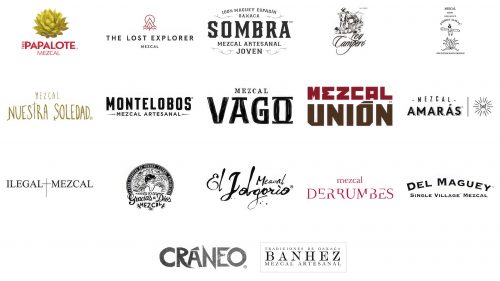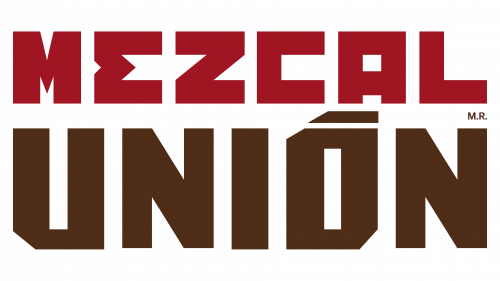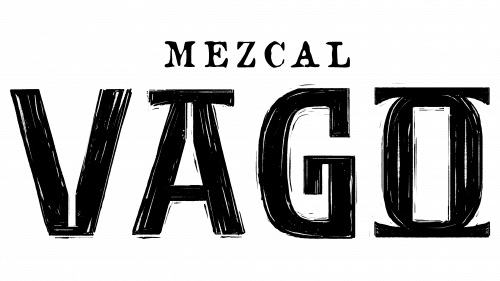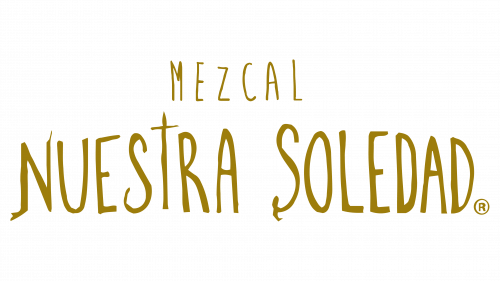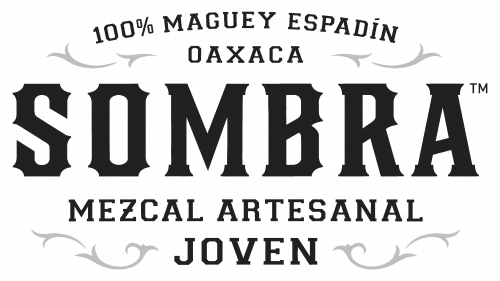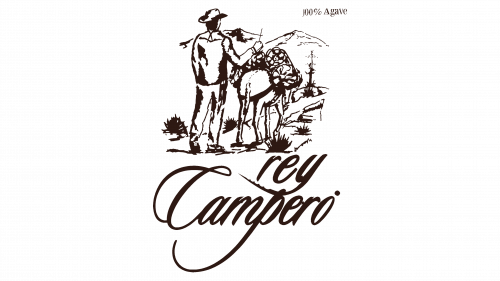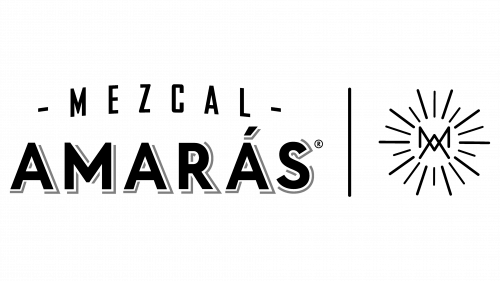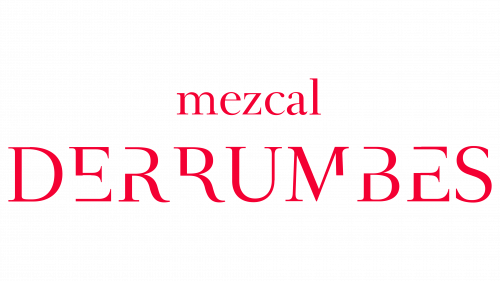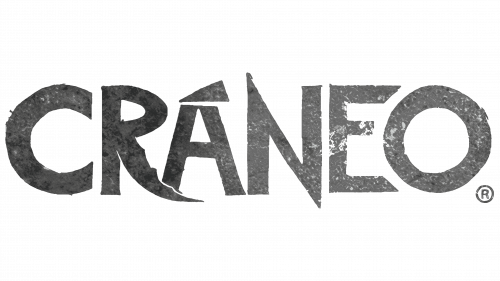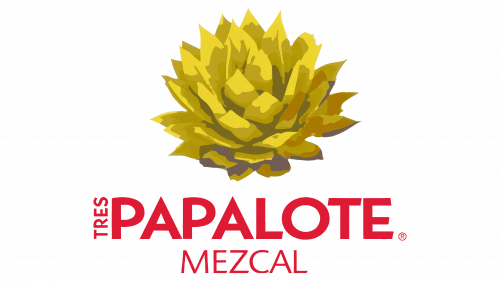Mezcal is a special drink from Mexico, made by distilling the juice of the agave plant. People in Mexico started making it long ago, even before the Spanish came in the 1500s. They would take the sweet juice from the agave plant, let it ferment, and then distill it.
Back when Spain controlled Mexico, mezcal became popular. This was partly because grapes didn’t grow well there, so making wine was hard. Most mezcal was made by hand in small batches, and sometimes, the conditions weren’t very clean.
In the 1800s, the first big mezcal companies started. They made lots of mezcal and made sure it was good quality. This helped them sell mezcal to other countries like the USA and Europe.
Nowadays, lots of people around the world love mezcal. It’s as famous as drinks like tequila, rum, and whiskey. The best mezcal brands use good agave and make it traditional.
The logo shapes the brand’s image and recognition, helping consumers distinguish between different companies in this alcohol category. Traditional labels often feature elements that highlight mezcal’s connection to Mexican roots and culture:
- The agave cactus image, mezcal’s primary plant ingredient, underscores the drink’s quality, derived from the juice of century-old plants.
- Traditional Mexican symbols, such as the sunstone or floral-adorned skulls, set the tone and add character.
- Folkloric style illustrations depicting national motifs and crafts.
Vibrant logo design and styling prompt the desired associations and emotions within the target audience, enhancing the brand’s appeal. This impact is reflected in sales and recognition, solidifying Mezcal’s position in the global spirits market.
Del Maguey
In the 1990s, Ron Cooper, an artist who became a businessman, discovered the old way of making mezcal in Oaxaca, Mexico. He liked the unique tastes and the old ways they made it, like crushing agave with stones and distilling it in clay pots. So, in 1995, he started Del Maguey Single Village Mezcal to show off these special mezcals made in small batches by local people.
He began with just three kinds of mezcal from different places in Oaxaca. Each one showed off the special taste of its area. As the company grew, it added more types and became popular in the United States and other countries. People worldwide started to like mezcal for its traditional and handmade qualities.
Even after a big company bought Del Maguey in 2021, it made mezcal the old way, working with many mezcal makers in Oaxaca. They stick to using old, earth-friendly methods. This has made their mezcal well-known and loved all over.
The logo of Del Maguey, with the words “SINGLE VILLAGE” around “DEL MAGUEY,” shows how much they care about their local community and keeping traditions alive. The simple black letters of the logo represent the company’s focus on quality and tradition in making mezcal.
Montelobos
Montelobos was started 2010 by Iván Saldaña, using his family’s long history of making mezcal in Oaxaca, Mexico. He wanted to make top-quality mezcal for people all over the world. Working with a master mezcal maker, Don Abel, they stuck to old ways like using horses to crush the agave and distilling in copper pots. This careful process makes their mezcal special, capturing the true taste of where it’s from.
“Montelobos” comes from the mountains and wolves near Saldaña’s old village. The brand became famous for its mezcals from different agave plants and was celebrated internationally in 2015. They even made a special blend called “Ensamble” to show off the variety of mezcal flavors. They have an Ancestral line, working with an expert, Tess Rose Lampe, to bring back old distilling methods and focus on rare agave types.
Montelobos is known for traditionally making mezcal and being eco-friendly, with organic certification and careful sourcing of agave. Their clear logo fits a modern style, mixing tradition with a new look. Iván Saldaña leads the company, keeping strong connections with local mezcal makers and sharing their small-batch mezcal with the world. Montelobos is a symbol of Mexican mezcal tradition, loved both locally and internationally.
Ilegal Mezcal
Ilegal Mezcal started in a hidden bar in Guatemala and grew into a well-known Mezcal brand. It has a simple logo that fits its classy look. The brand began in 2004 when John Rexer, an American living abroad, brought small amounts of mezcal from Oaxaca, Mexico, to Guatemala. Mezcal was hardly known outside Mexico then. Rexer used to sneak mezcal across the border, so it’s called “Ilegal.” What started as a secret operation turned into a real business in 2006. Ilegal Mezcal focuses on mezcal joven, a type of mezcal that is not aged and is known for its smoky flavor. They wanted to share this traditional Mexican drink with more people.
Ilegal Mezcal became popular through word-of-mouth and praise from drink experts. It found a special place in the high-end drink market, attracting fans among bartenders and drink lovers. In 2017, Bacardi bought Ilegal Mezcal, but Rexer stayed on to keep the brand’s focus on traditional methods and support for small producers in Mexico. Ilegal Mezcal has helped more people worldwide learn about Mezcal’s rich history, connecting different cultures and tastes.
Mezcal Unión
In 2011, a group from Mexico started Mezcal Unión with two big goals. They wanted to make mezcal more popular and help the environment and society. They worked closely with local farmers and mezcal makers in Oaxaca to ensure everything was done the traditional way, which helped everyone involved. Then, in 2016, they teamed up with a big company called Diageo. This helped them reach more people worldwide, bring in more farmers and mezcal makers, and do even more good in Oaxaca by helping the local economy and society.
Mezcal Unión is special because it sticks to the old ways of making mezcal and cares about the local community in Oaxaca. They offer different kinds of mezcal, like Mezcal Unión Uno, Mezcal Unión Silvestre, and Mezcal Unión El Viejo, all showing how rich Mexican traditions are.
They keep working with local agave farmers and mezcal experts, focusing on making high-quality mezcal, supporting the community, and looking after the environment. Their logo is easy to spot: “MEZCAL” in big red letters and “UNIÓN” in deep brown, which looks modern but shows they respect their roots. The ‘M.R.’ tag on their logo stands for top quality, making Mezcal Unión a respected name in the mezcal world.
El Jolgorio
El Jolgorio Mezcal is a special kind of drink from Oaxaca, Mexico, made by the Cortes family. They started making it in 2010 to keep their traditions alive. Mezcal is very important for celebrations and ceremonies in Oaxaca. By 2019, the Cortes family worked with seventeen families from ten places to make El Jolgorio. Each bottle tells a story about its origin and who made it. They make mezcal the old way, cooking agave plants in the ground, fermenting them outside, and distilling them in copper pots. The label on each bottle tells you about the agave used, when and where it was picked, who made it, and how many bottles were made. This helps people who drink it feel connected to the makers and the land.
El Jolgorio uses different kinds of agave, including wild and rare, to make unique drinks. Some are very special and can be saved for up to eighteen years. Rolando Cortes and his family work with skilled metal makers who care greatly about the land and its traditions. Their making mezcal helps share the benefits with many producers in Oaxaca and keeps the agave plants healthy.
The logo of El Jolgorio looks friendly and inviting, with the name in a playful, handwritten style. This fits perfectly with the handmade and traditional quality of their mezcal. The word “Mezcal” is written in a fun font below, showing their pride in making this traditional drink.
Mezcal Vago
Mezcal Vago is known for making mezcal the traditional way, focusing on being open about how they do it. Their logo has hand-drawn letters that look rough, showing they like to keep things simple and traditional.
The company was started in 2013 by two Americans, Dylan Sloan, and Judah Kuper, who loved the old ways of making mezcal. They teamed up with Aquilino García López, a mezcal-making master from Oaxaca, Mexico. He taught them to make mezcal the old-fashioned way, like crushing agave by hand and using wooden vats for fermenting.
They wanted to bring these traditional mezcals to the U.S., making them in small amounts to keep the quality high. By 2016, people started to enjoy their mezcal, which comes from different types of agave plants. They even made a special mezcal called Elote, flavored with roasted corn husks, which gives it a sweet, smoky taste.
Sloan and Kuper keep working with Don Aquilino to make more mezcal but still stick to the traditional methods. Mezcal Vago is praised for caring about the environment and ensuring everyone who helps make the mezcal is treated and paid fairly.
Nuestra Soledad
In 2007, Valentín Cortes, his brother Rolando, and his son Asis started Mezcal Nuestra Soledad. They come from a family that has been making mezcal for six generations. This brand is about loving the agave plant and making mezcal in a way that doesn’t harm the planet. They make their mezcal in parts of Oaxaca, Mexico, like Santiago Matatlán and San Luis del Rio. Each place gives the mezcal its special taste because of the local plants and how they make it there.
Mezcal Nuestra Soledad is made in six places in Oaxaca, and each has its way of doing things. They use 100% Espadin agave and follow old traditions for growing, roasting, fermenting, and distilling. This makes each mezcal unique. They have six kinds of mezcal, each from a different village. This shows off the different environments and tastes you can find in Oaxaca. The way they make mezcal has been passed down through families for a long time, making their drinks special.
Their logo is golden and fun, with letters of different sizes and angles. It looks friendly and shows they care greatly about their traditions and making unique mezcal.
Sombra
In 2006, Richard Betts started Sombra Mezcal because he loves wine, spirits, and everything about Mexico. He found mezcal fascinating while visiting Oaxaca and decided to team up with an expert mezcal maker and the Sanchez family, who had been making mezcal for a long time. Together, they created Sombra, a brand that cares much about being kind to the planet. They use solar power for their distillery to keep the earth clean while making mezcal traditionally.
Sombra works hard to protect the environment and is proud to be one of the first mezcal brands recognized for sustainability. They care about saving water, treating workers well, using renewable energy, and helping their community. With its old-style font, Sombra’s logo shows off its deep roots. It mentions that it’s made from 100% Maguey Espadin and is a traditional, young mezcal, highlighting its focus on natural and traditional methods.
With Betts and Jorge Sanchez leading, Sombra offers different kinds of mezcal, like the famous Espadín Especial, and others made from Oaxaca’s unique agaves. Their work in being eco-friendly and keeping Mexican spirit traditions alive has won them awards worldwide. Sombra Mezcal sets an example by sticking to handmade production methods and caring for the planet, giving us a taste of Mexico’s heritage and a promise to a healthier earth.
Rey Campero
Rey Campero is a special drink called mezcal, made in the mountains of Oaxaca, Mexico. It started with Romulo Sanchez Parada, who learned how to make mezcal from his dad. His family has been doing this for four generations. In 2003, Romulo made his mezcal called Rey Campero, which means “King of the Countryside.” He wanted to keep making mezcal traditionally, just like his ancestors.
Romulo worked in other countries for a while but came back in 2003 with a plan. He built a place called a palenque in his hometown and ensured his mezcal was made the right way, respecting the people working for him and taking care of the environment. People in Oaxaca first loved his mezcal, but in 2012, he started selling it in the United States. Rey Campero makes three kinds of mezcal from wild agave plants, and people enjoy its authentic taste.
The logo of Rey Campero shows a man and a mule harvesting agave, which tells the story of how mezcal is made. Romulo’s dedication to making good mezcal and honoring his heritage has made Rey Campero popular in new places, sharing the rich culture of Oaxaca with more people.
Gracias a Dios
Gracias a Dios is a special mezcal brand from Oaxaca, Mexico. It started with two friends, Moisés Guindi and Iván Saldaña, who wanted to make a unique drink. They focused on using old methods to make mezcal and even made an agave gin. Their logo looks like a circle with a winged figure, like a saint, which shows they care a lot about their culture and history.
In 2010, they made three high-quality mezcals: Espadín, Tobalá, and Madrecuixe. Each comes from a different place and is made in small amounts to keep it special. They made other special mezcals and set up their place to make it in 2013. This showed they care about making mezcal the right way and helping their community.
Gracias a Dios has become popular in Mexico and the United States because they make their mezcal carefully and care about the environment. They’ve won awards and have lots of fans now.
Even after more than ten years, Gracias a Dios keeps celebrating Oaxaca’s traditions and helps the places where their mezcal is made. The people who started it, Guindi and Saldaña, ensure every bottle is full of the history and spirit of Oaxaca.
Mezcal Amarás
In 2010, a group of friends traveled through Mexico’s mezcal-making areas. They saw how hard it was to grow and make mezcal and started their brand, Mezcal Amarás. This brand is about loving and respecting Mexican traditions and showing off the skills of mezcal makers that have been passed down for generations. Every bottle of Mezcal Amarás is special, hand-signed, and shows the spirit of Oaxaca and Mexican roots.
Santiago Suarez, one of the founders, says that the choices mezcal makers make are very important for the mezcal’s taste and quality. Mezcal Amarás is more than just a mezcal company. It cares a lot about the environment and only uses agaves that are grown the right way. They give back 15% of their profits to help the local communities and make sure there are enough agaves for the future by planting ten agaves for every one they use. This helps create jobs and is better for the planet. They pay the people they work with 20% more than usual, showing they care about their community.
Mezcal Amarás is a good example of a company that cares about its community and the environment. Its logo has “MEZCAL” and “AMARÁS” in a lively design with a sunburst pattern that shows the brand’s energy and excitement.
Pierde Almas
Pierde Almas Mezcal is a special drink made the old way, honoring traditions. It stands out because it uses rare types of agave plants for its special drinks. The symbol of the brand shows a person with dragonfly wings over an agave plant, making you think of spirits or gods connected to mezcal. “PIERDE ALMAS” means “lost souls,” adding mystery and linking the drink to old stories and its magical effects.
Jonathan Barbieri, an American artist who moved to Oaxaca, Mexico, started Pierde Almas Mezcal. He fell in love with local mezcal and began making his own, first for friends and then for more people as it became popular. Now, Pierde Almas makes about 9 to 11 types of mezcal, each with handmade labels and drawings by Barbieri.
Pierde Almas is known for making mezcal the traditional way and trying new things. For example, they make a mezcal called pechuga by distilling it three times and adding chicken breast and fruits. They even use meat from wild turkeys and rabbits for other unique mezcals, producing about 400 bottles annually.
At a special event in Chichicapam, Pierde Almas celebrated a new pechuga mezcal. Important guests, including Barbieri and the Sanchez brothers, who make mezcal, came to enjoy the tradition and the special way they make mezcal, using herbs for gin in the third distillation.
Derrumbes
In 2012, Derrumbes Mezcal started with a simple idea from people who knew a lot about alcohol. Sergio Mendoza made Tequila before, and his partner, who had money and was related to Sergio, decided to make a new kind of mezcal. They didn’t have much money at first, just $15,000, but they were excited and worked hard to grow their business by putting the money they made back into it.
Derrumbes wanted to make mezcal more popular in places outside of Oaxaca, helping small family businesses get noticed and sell their mezcal. This was good because it helped more places grow agave plants and took some of the pressure off Oaxaca, where a lot of agave was used. They wanted to help families make mezcal and take care of the environment simultaneously.
Derrumbes offers different kinds of mezcal from various parts of Mexico, each showing off the unique tastes of that area. Sergio Mendoza and Esteban Morales, who makes La Venenosa, work together to celebrate Mexican mezcal’s rich culture and tradition.
The logo of Derrumbes is special, too. It has the word “mezcal” in a pretty font and the name “DERRUMBES” in dark red letters, which shows their love for mezcal and their promise to keep making high-quality drinks that respect old traditions.
The Lost Explorer
In 2020, David de Rothschild started The Lost Explorer Mezcal. He loves the environment and Mexican culture. He worked with Maestro Mezcalero Don Fortino Ramos. They care a lot about tradition, quality, and helping the planet. Their place in Oaxaca uses solar power and collects rainwater. They plant more agave plants, which is good for the earth and the people living there.
They make three kinds of mezcal: Espadín Joven, Tobalá, and Salmiana. Each is made from different Oaxacan agave plants. People liked these mezcals because they taste great and are made in a way that doesn’t harm the planet. The Lost Explorer is known for being good to the Earth. Their Espadín mezcal won a big award in 2021, and their Joven mezcal got another big award in 2022.
Their logo is modern. It has a big red “A” that resembles a mountain and a line resembling the horizon. This logo shows their love for adventure and exploring. It stands for their journey to make mezcal in a good way for the planet.
David de Rothschild and Don Fortino Ramos lead the way in making mezcal that respects nature. They want to make great mezcal and help the planet simultaneously. They hope to show others how to do business well for the earth.
Banhez
Banhez Mezcal comes from Oaxaca, Mexico, thanks to Francisco Javier Perez Cruz. He saw how hard it was for mezcal makers in his area and wanted to help. Francisco grew up in Oaxaca and knew these struggles well. When he returned to Ejutla, he started working to improve things. He held important jobs, like being the treasurer and then the mayor. Francisco worked hard to improve farming and help the community. He helped create a council that brought mezcal makers and others together.
Banhez Mezcal is made by over 35 families in a small place called San Miguel Ejutla in the middle of Oaxaca. These families work together to grow the plants, make the mezcal, and pack it. They keep old traditions alive, working as a team like Francisco wanted. They care a lot about making mezcal, using ways that are good for the earth and fair for everyone.
The name Banhez Mezcal and its logo show pride in where they come from and how they make their mezcal. The logo looks strong and respects their history. It says “BANHEZ” in big letters, with “MEZCAL ARTESANAL” to show it’s made by hand, and “TRADICIONES DE OAXACA” to remember the long history of making mezcal in Oaxaca.
Craneo
Craneo Organic Mezcal is a special drink made by David Ravandi, who created 123 Tequila. It celebrates the Day of the Dead and sticks to old traditions. This mezcal is made from Espadin agave, grown high in Santiago Matatlan, Oaxaca. It’s organic and has a bit more alcohol than usual, 42%. It tastes like a mix of smoky, sweet barbecue, citrus, and other fruits like orange, grapefruit, and banana, with a hint of sugar. This mix makes it both sweet and smoky, which many people like.
Craneo started in November 2016 and is among the few organic mezcals you can find. It has a skull on its bottle, inspired by an Aztec goddess, which stands for strength and inspiration. The taste combines smoky barbecue with a touch of citrus, including flavors like orange zest and grapefruit. It’s smooth, not too sweet, and has a smoky smell.
The logo of Craneo is simple but deep, showing the name in a textured, gray style that reminds you of stone and the long history of mezcal. The modern, simple font used for the logo matches the brand’s straightforward and powerful look, showing what Craneo is all about.
Tres Papalote
Tres Papalote Mezcal comes from the mountains of Guerrero, Mexico. It’s special because it’s made with care, using old Mexican ways. They pick a special kind of agave plant called Cupreata from high places. These plants make the mezcal taste good, smooth, and smoky, with hints of herbs and citrus.
They make three kinds of mezcal, each tasting different. Some are sweet and soft, and others are strong and full of flavors. Cheech Marin, a famous actor and comedian, helps tell people about Tres Papalote. He loves Chicano culture and mezcal.
Making Tres Papalote is hard work. They start by picking the agave, then roasting it, crushing it, letting it ferment, and finally, distilling it twice or thrice. This ensures the mezcal is top quality, with just the right taste and strength.
The bottle looks cool because Cheech Marin’s Chicano art collection inspires it. The label was made by Jaime Zacarias, an artist called Germs. It shows a fun design with luchador masks and bright colors, which shows the culture behind the mezcal. This art is in the Cheech Marin Center for Chicano Art in Riverside, California.
The logo for Tres Papalote has a gold and green agave plant and the name in bold red letters. It shows how much they love agave, the main ingredient in mezcal, and celebrates Mexico’s joyful culture and traditions.
